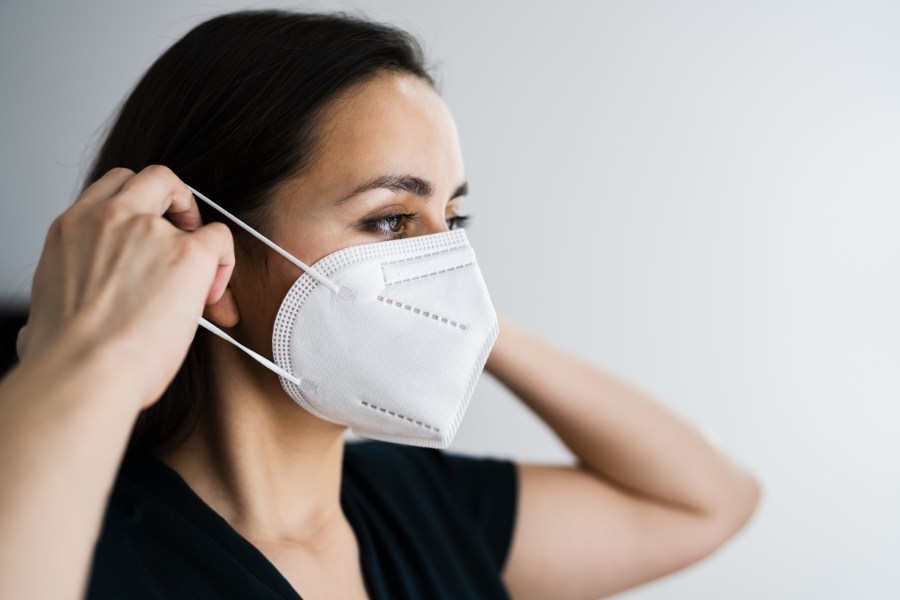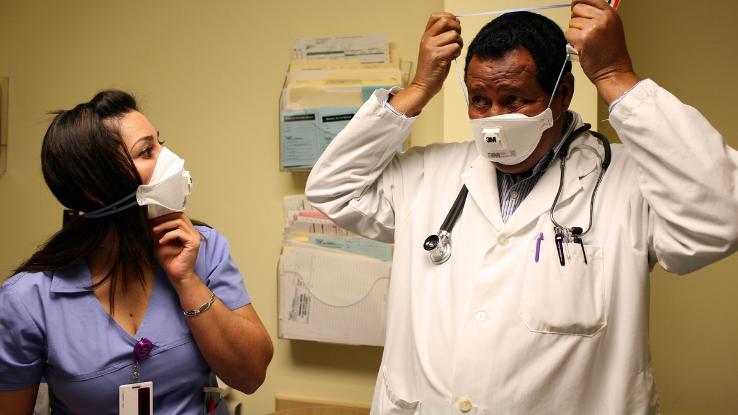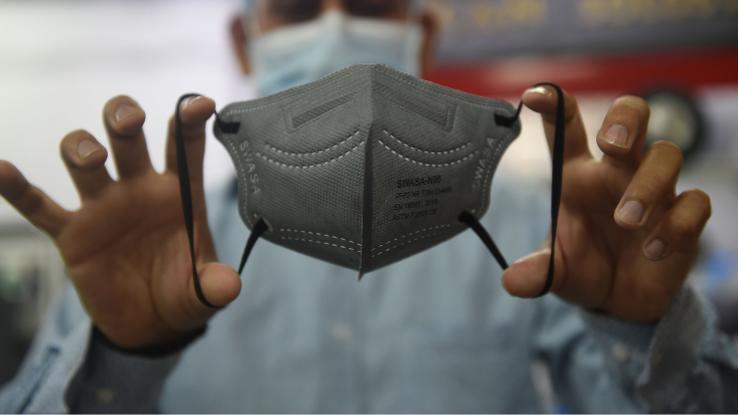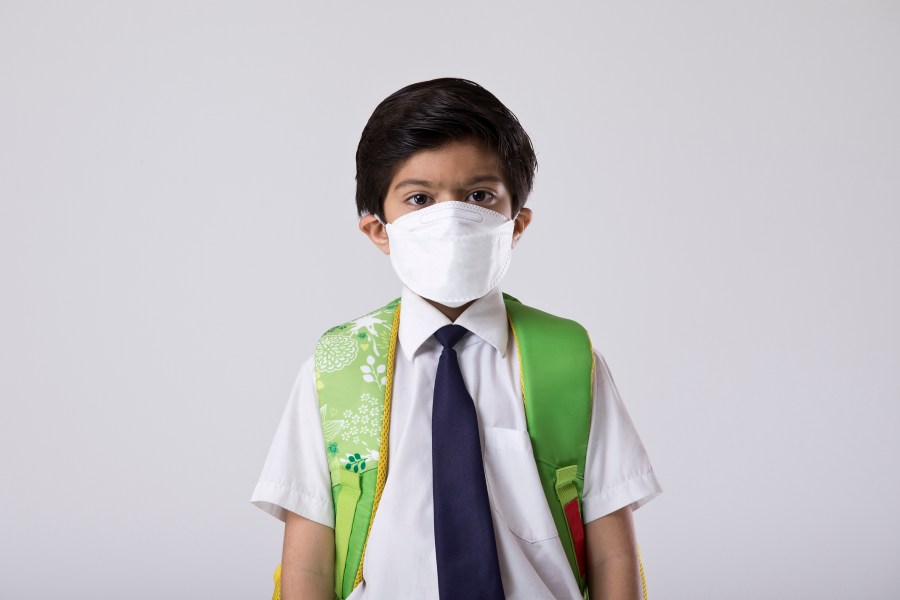After Effects How to Continue a Mask

Since the Centers for Disease Control and Prevention (CDC) initially advised wearing face coverings to reduce the spread of COVID-19, masks have become an essential part of daily life. Since the emergence of the Omicron variant, people have been stepping up their mask game even more.
However, part of wearing a mask is knowing how to care for it. But when should you clean, replace or dispose of your mask? And how do you do so effectively? Find out the general guidelines for proper mask care to limit contamination during the pandemic.
Types of Masks
Masks can broadly be separated into two categories: masks and respirators. While everything that we'll discuss in this article is technically a mask, the category of masks tends to describe items that create a physical barrier between the nose and mouth of the wearer and the outside world. Masks do not form a tight seal around the mouth and nose. Respirators do form a tight seal around the mouth and nose, and this seal, along with an electro-static charge, has the effect of actually filtering particles out of the air and into the mask before they can be inhaled.
"Masks" tend to refer to cloth masks as well as surgical or procedure masks that do not form a tight fit. N95s, KN95s, and KF94s all fall into the category of "respirators". In the early days of the pandemic, cloth and surgical masks were effective at reducing the likelihood of transmission between wearers, and it was important to reserve the use of respirators for medical professionals, as supply was low. Now respirator supply is stable and robust, and the Omicron sub-variants, including the new BA.2 variant, aren't deterred by cloth and paper masks. So if you haven't already switched to a respirator, now is the time, and while you're at it, it's a good idea to learn about how to clean them and when to throw them away.
Since respirators working by drawing in virus particles and trapping those particles in the mask, it's important to disinfect your respirators between uses to kill off those particles. Since an electrostatic charge is what makes respirators work, throwing them in the washing machine or getting them wet at all is not an option.

You can disinfect respirators by storing them in a cool, dry place and giving virus particles time to die off. Experts recommend having a rotation of respirators that you alternate between, and storing them in a paper (not plastic) bag when not in use. The coronavirus can live on surfaces for up to 72 hours, so keeping a rotation of at least five masks guarantees that virus particles have had plenty of time to die off before you re-use your mask.
While some sources suggest disinfecting with sanitizing sprays or even by using your oven, these techniques have the potential to degrade your mask faster, and any damage to the straps, nosepiece or other parts of the mask will compromise the protection it can provide.
Cloth and Paper Masks
If you're using disposable face coverings, it is not recommended that you disinfect and re-use them. Paper and surgical masks are one time use products and should be discarded at the end of the day or outing. And while these masks are not recommended to protect against Omicron variants, including the new BA.2, it is true that layering a paper or surgical mask under a cloth mask is far more effective than using either on its own.
If you are going the double-masking route, you want a mask made of cotton cloth with at least two layers of fabric.Change and wash cloth masks regularly if you wear them every day. Jade Flinn, a nurse educator for the Biocontainment Unit at Johns Hopkins Medicine, told The Washington Post, "Treat your mask like your underwear. You want to change it every day. Thinking about the moisture and the bacteria that's building up in that mask itself, you don't want to wear that mask again the next day."
Follow These Steps to Clean Your Cloth Mask Properly With a Washer and Dryer:
- It's safe to put your mask in the washing machine and dryer with your regular laundry.
- Add your regular detergent.
- Use the warmest settings on the washer and dryer that are safe for the cloth.
- Dry the item completely.
- Store in a dry, cool place
What about cloth masks with filters? Masks with pockets for filters can be easily purchased or made at home. Various companies sell specialized and effective filters (carbon or HEPA). Depending on how often you wear the face mask, change the filter when it gets "soiled, moist, or [has] lost shape." Replace it more often if you're using it daily to protect yourself from germs that have accumulated on the mask. For homemade filters, you can use coffee filters, paper towels and toilet paper, all of which need to be replaced after each wear. These sorts of mask vary in efficacy, and it's best practice to pick a mask that fits your face well and to read the manufacturer's details for specific information about the level of filtration it provides. And don't forget to follow the guidelines for replacing the filter.
How to Safely Remove Your Mask or Respirator

Follow these tips to take off your mask at home or work:
- Only touch the ties or ear straps when you take off the mask.
- Untie the strings behind your head or pull the bands from behind your ears.
- Be careful not to touch the front of the mask or your face.
- Cut the looped ear straps to prevent animals from getting caught in them.
- Place the used mask in a closed bin.
- Immediately wash your hands for 20 seconds with soap and water.
When Is It Time To Throw Your Respirator Away?
As mentioned above, your respirator works through a combination of electrostatic charge and proper face seal. So you should inspect your respirator before re-wearing. Some respirators can be seal-tested, and you should refer to the manufacturer's guidelines to see if that applies to yours. Throw away your respirator if it looks visible soiled, deformed, or if the ear or head straps show wear.

Use this guide to stay safe when wearing and replacing your face masks. It's important to know how to properly handle different face coverings, whether you're using a respirator or a disposable mask. Reminder: If the mask gets sweaty or dirty, you need to throw it out or wash it. If you have any doubts, change or clean it.
jamisonseliestionce99.blogspot.com
Source: https://www.ask.com/news/need-to-know-covid19-mask-care?utm_content=params%3Ao%3D740004%26ad%3DdirN%26qo%3DserpIndex&ueid=6fee18e7-1ee1-4840-8663-be2f178eca3b
0 Response to "After Effects How to Continue a Mask"
Enregistrer un commentaire